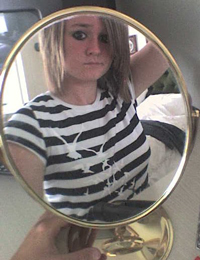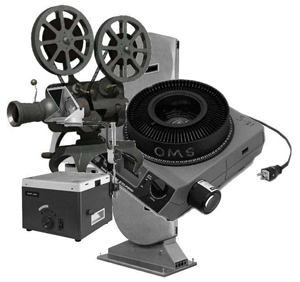Read this conclusion to the alarm clock essay:
I used to depend on my mother to get me up every morning. Besides that, I depended on her to remind me about homework, to give me money when I needed it, and even to make sure I had the right clean clothes to wear to my job. Now I’ve learned to be responsible for myself.

Source: Fast Asleep, brennaval, Flickr
Here are some questions to ask about this conclusion: Is anything included that is different than what you read in the rest of the essay? Is there anything that hasn’t been presented already?
Conclusions (like introductions) need to deliver the essentials: a reminder of the thesis and a reminder of the central points supporting the thesis. The conclusion above does those things, but it does no more. It seems reasonable for a reader to skip it since it doesn’t say anything new.
Though conclusions are not the place to introduce new subtopics, it’s still possible to write a conclusion that is worth the time it takes to read it. A conclusion can tie the end of the essay to the beginning to give a reader a satisfying sense of unity. A conclusion can also introduce results and effects: ways that the thesis idea can be extended into the future.
In this section, we are going to practice two strategies for revising conclusions. The first is mirroring, which circles back to the beginning of the essay. The second is projection into the future, which focuses on results and effects. These strategies are two ways to improve an ordinary essay conclusion.

Source: Molly’s Mirror, ian boyd, Flickr
Mirroring
Mirroring refers the reader to the way the essay began—not to the main ideas, but to the particular situation, example, anecdote, or analogy that was initially used to get the reader interested in the essay.
Remember the dialogue introductions in the last section? Look at the dialogue that was used for the essay about helping other people. It is repeated for you below.
To mirror the use of dialogue, we could start the conclusion with some dialogue. That seems a little cumbersome, though. Referring back to the situation of the students observing a third student dropping his backpack would make enough of a connection.
Introduction
“Oh wow, did you see that? That guy really ate it on those stairs.”
“Yeah, I see. Oh no, his backpack came open and the wind is scattering his papers.”
“This is crazy. I’m glad I’m not him right now.”
“Should we go over and help?”
“Nah. I’ve got to get to class. It’s not our problem.”
“Yeah, you’re right.”
Conclusion
Now, if I saw someone “eat it” on the stairs and saw papers flying all over the place from a dropped backpack, I don’t think I would say, “It’s not my problem.” It is my problem to help people out when I can. My mother helped me see this and changed the way I think about helping other people. If my friend asked me “Should we go over and help him?” whether I had to get to class or not, I’d say, “yes.”
Can you see all the points at which the conclusion mirrors the introduction?
Words from the introduction
- ate it
- on those stairs
- his backpack
- papers
- Should we go over and help him?
- have to get to class
- It’s not our problem.
Words from the conclusion
- eat it
- on the stairs
- the backpack
- papers
- Should we go over and help him?
- had to get to class
- It’s not my problem.
 Look back at the dialogue you wrote for the alarm clock introduction in your graphic organizer. Using your notes, write a conclusion that mirrors your alarm clock introduction. When you are finished, check your understanding to see how someone else used mirroring to revise. The ordinary version of the conclusion is repeated below for you to use as a starting point.
Look back at the dialogue you wrote for the alarm clock introduction in your graphic organizer. Using your notes, write a conclusion that mirrors your alarm clock introduction. When you are finished, check your understanding to see how someone else used mirroring to revise. The ordinary version of the conclusion is repeated below for you to use as a starting point. I used to depend on my mother to get me up every morning. Besides that, I depended on her to remind me about homework, to give me money when I needed it, and even to make sure I had the right clean clothes to wear to my job. Now I’ve learned to be responsible for myself.
Sample Response:
My mother doesn’t have to knock on my door anymore. No more “Come on, Roberto. It’s time to get up.” She knows I’m going to be up on time. She knows I’ll take care of my own appointments, my own homework schedule, and even getting my clothes ready for work. She doesn’t have to take responsibility for me because now I’ve learned to take responsibility for myself. And it all started with an alarm clock.
This conclusion mirrors some of the introductory dialogue and adds a reference to the alarm clock at the end. These reflections of elements from the beginning of the essay will give a reader a sense of wholeness and a satisfying feeling of having come full circle, of having completed a journey.

Source: Projector Project V - Thurs. Dec. 8,
2011 @ Vermillion, Robert Zverina, Flickr
Projection
When you use projection in a conclusion, you guide readers to make use of your thesis idea. If your thesis idea is that helping other people when you can is the right thing to do, then you should help your readers imagine how this idea could change the way a person might live his or her life. Look at the example revision of a conclusion below.
Model conclusion for an essay about helping out other people:
When I was younger, I didn’t feel any need to help people out, but I have grown up, at least a little. I now think differently about helping other people because of what my mother told me. I think that helping other people out when I can is just the right thing to do. This isn’t always easy. Sometimes it makes me late or takes some effort. But I think it is always worth it. And the thing is that when I help other people, they are very likely to pass it on and help someone else. By taking the time to help other people when we can, we may just make the world a better place to live.
How does this conclusion project? It projects into the future by considering the domino effect that could result from helping people.
 Using your notes, write a conclusion for the alarm clock essay that projects into the future; revise the original version of the conclusion shown below. When you are finished, check your understanding to see how someone else used projection in the revision.
Using your notes, write a conclusion for the alarm clock essay that projects into the future; revise the original version of the conclusion shown below. When you are finished, check your understanding to see how someone else used projection in the revision. I used to depend on my mother to get me up every morning. Besides that, I depended on her to remind me about homework, to give me money when I needed it, and even to make sure I had the right clean clothes to wear to my job. Now I’ve learned to be responsible for myself.
Sample Response:
I used to depend on my mother to get me up every morning. Besides that, I depended on her to remind me about homework and to give me money when I needed it, and even to make sure I had the right clothes clean to wear to my job. I’m a different person now. I’ve learned to be responsible for myself. I’m grateful to my father for seeing that I was ready to be responsible and trusting that I could do it with the right motivation. When I’m a father, I will try to have the same insight and have the same trust in my own children. And when the time is right, I know I’m going to bring home an alarm clock for each of them.
Tip for higher-level writers: Avoid giving your readers advice at the end of an essay. Most readers do not want to be told what to do. They would rather read about your expectations for yourself. In other words, say “The next time I see ________, I’ll do _______” rather than “So the next time you see ________, do ________.”
Experiment with revision possibilities. Give yourself options. Watch how other writers handle introductions and conclusions. Above all, don’t skip revision. After you’ve done the hard part by writing the first draft, take your writing seriously and spend some time revising it.